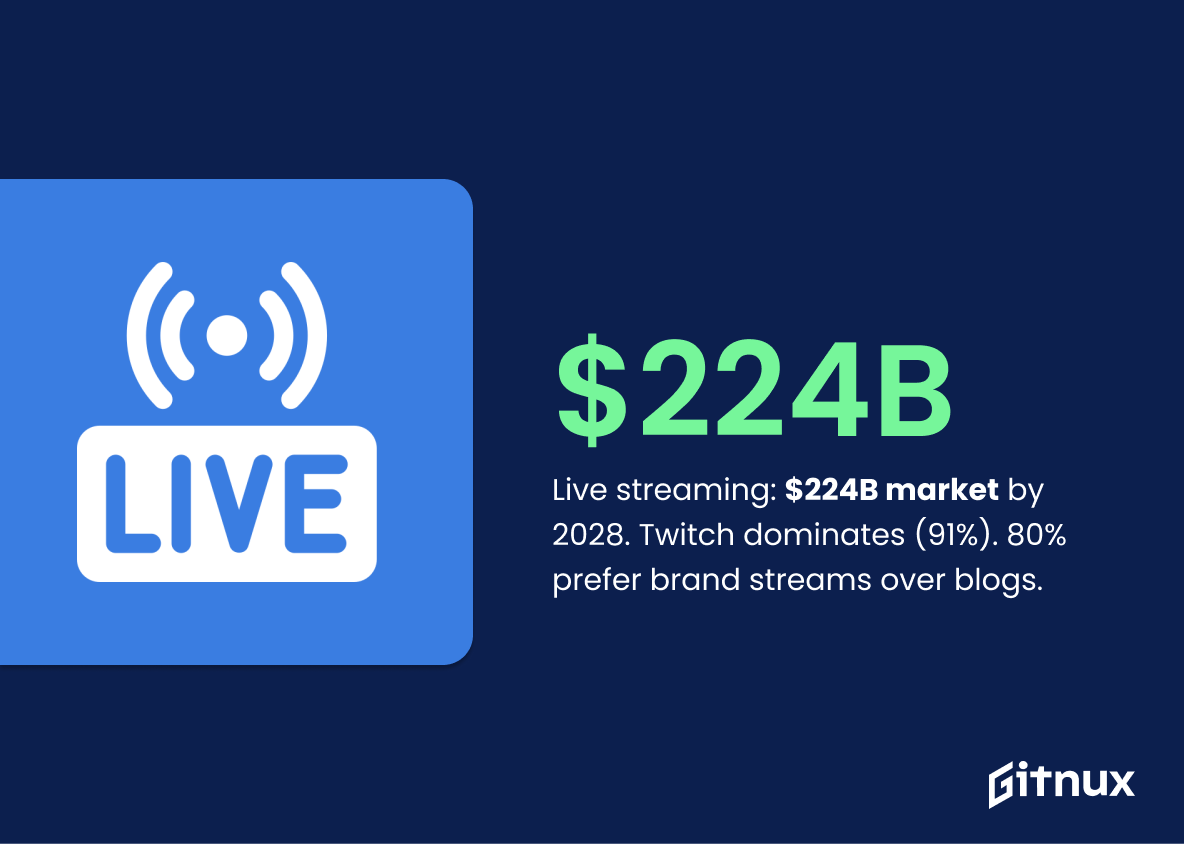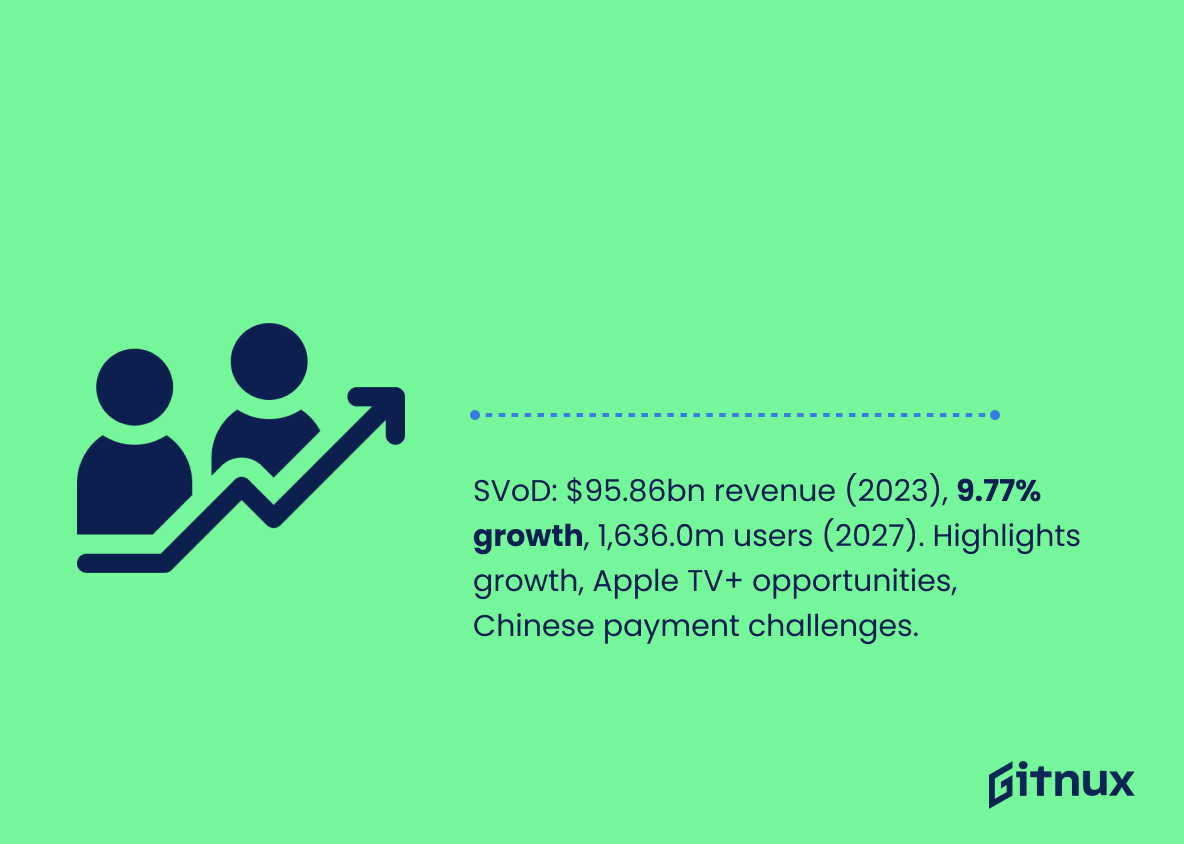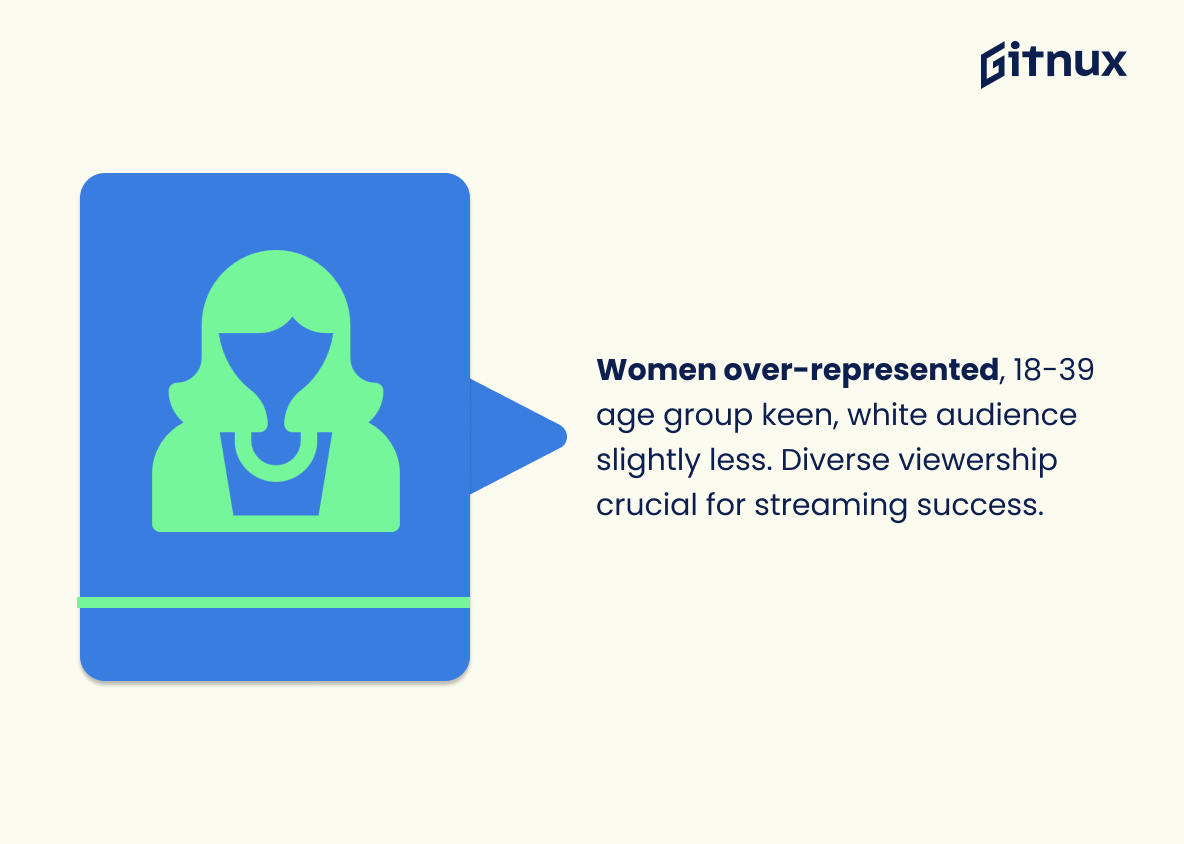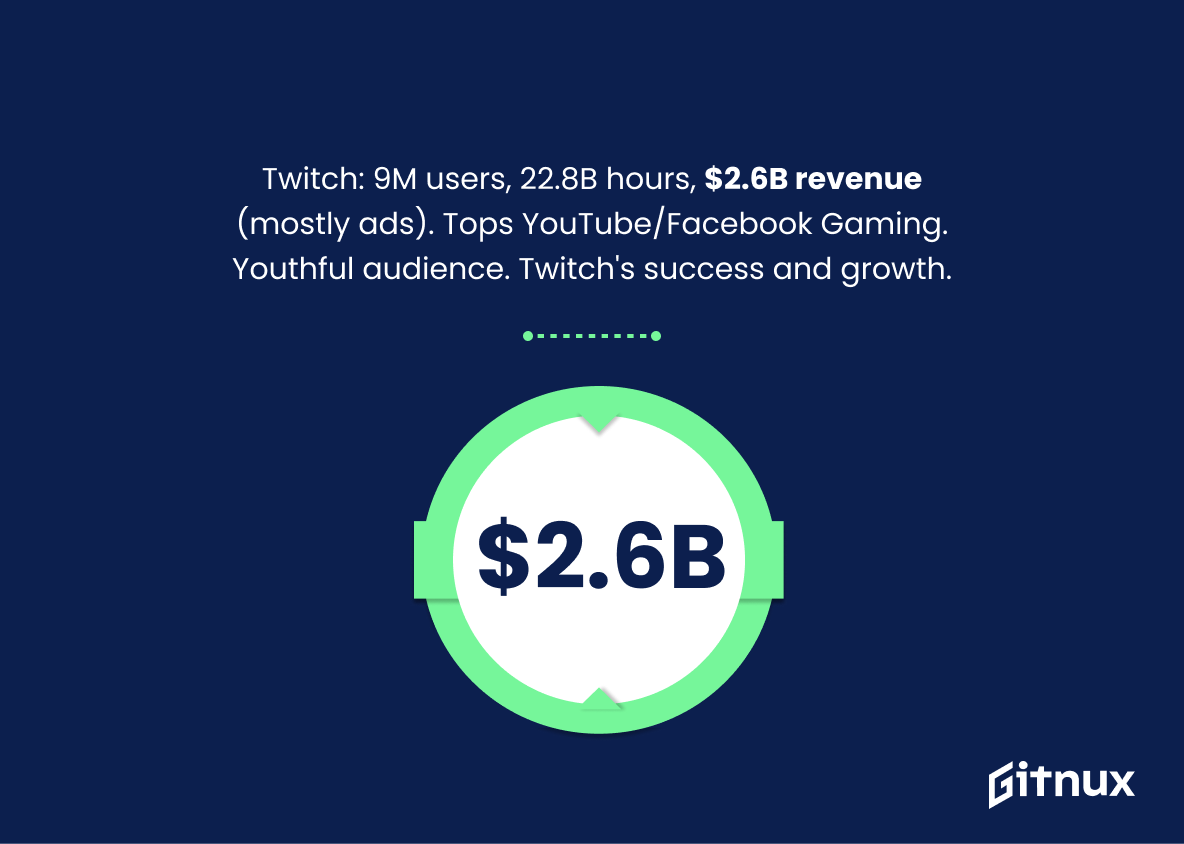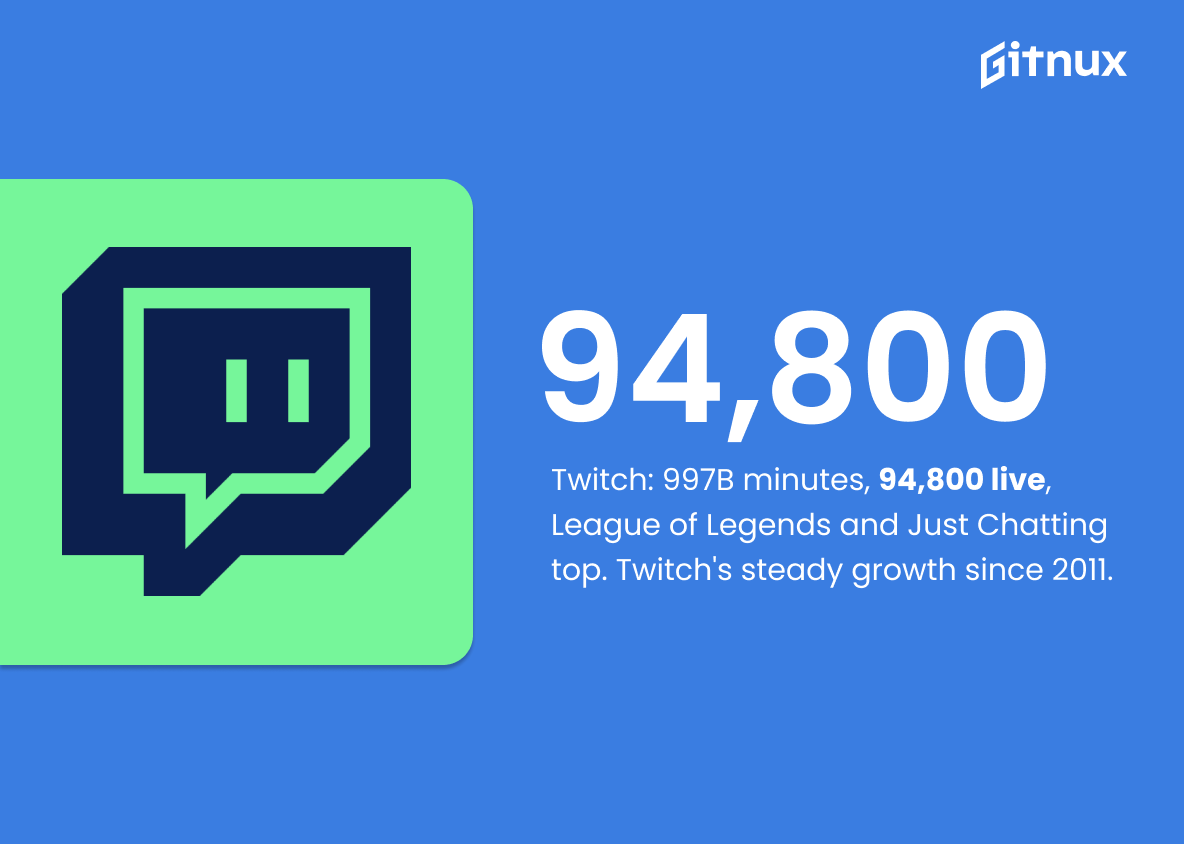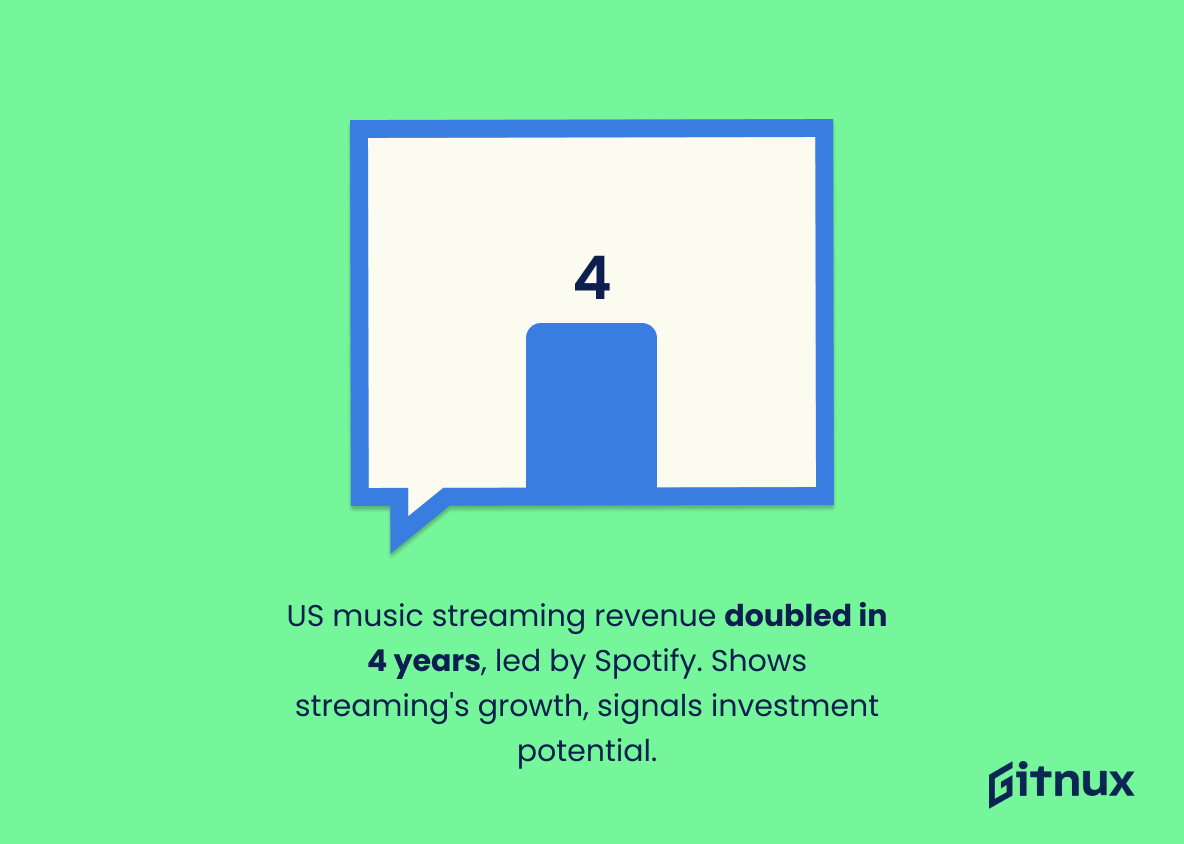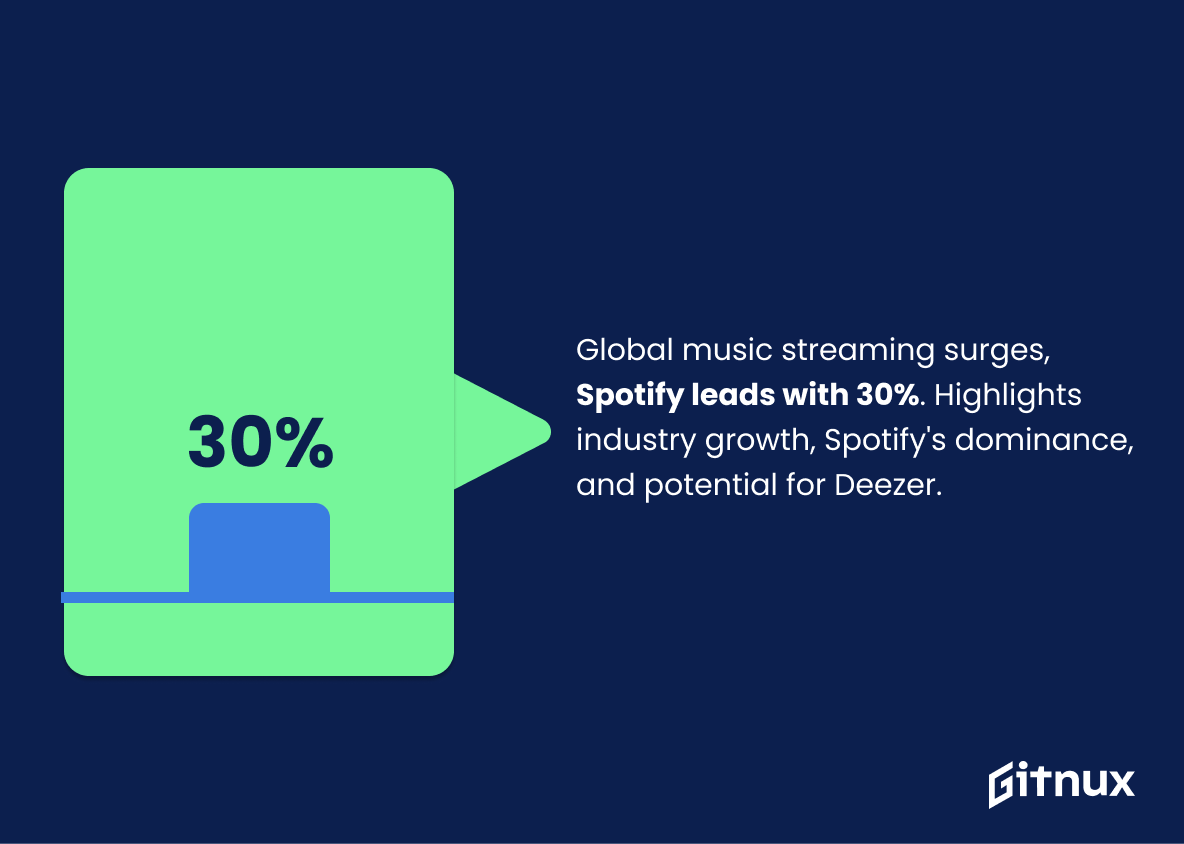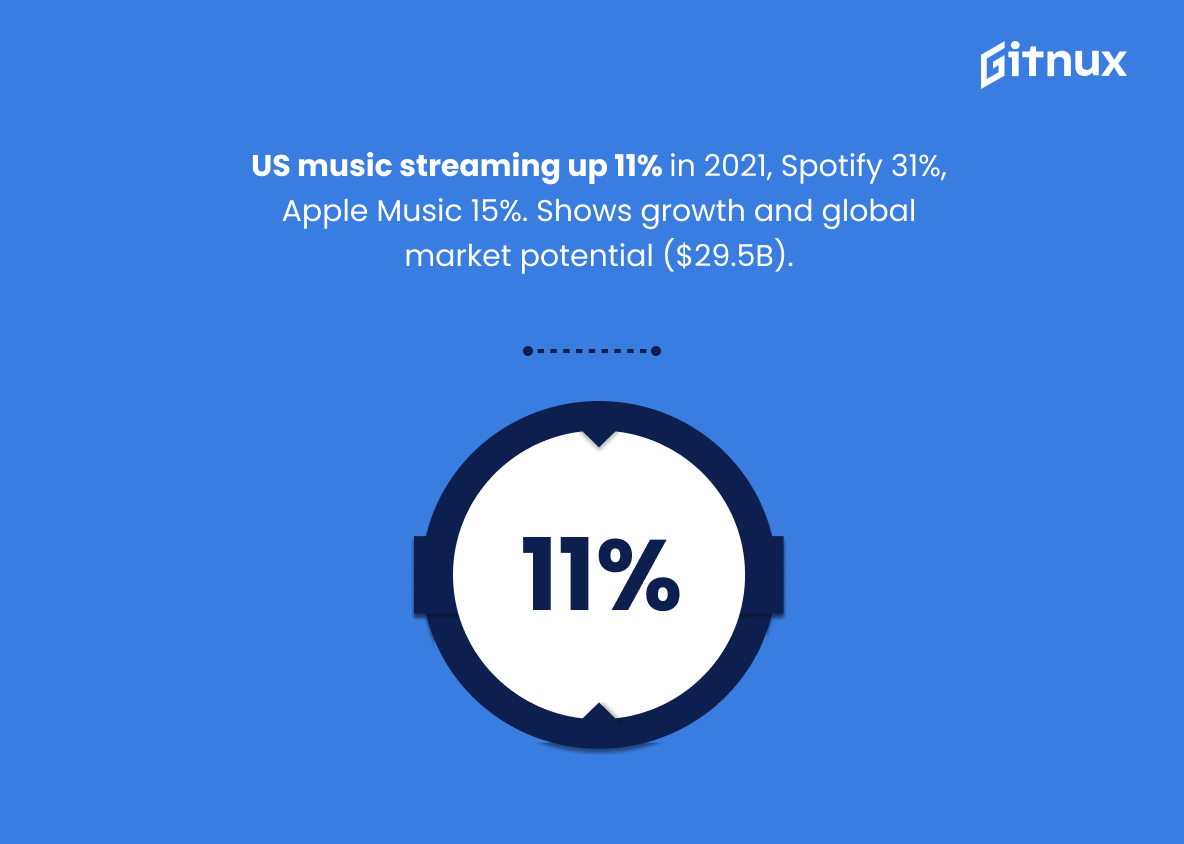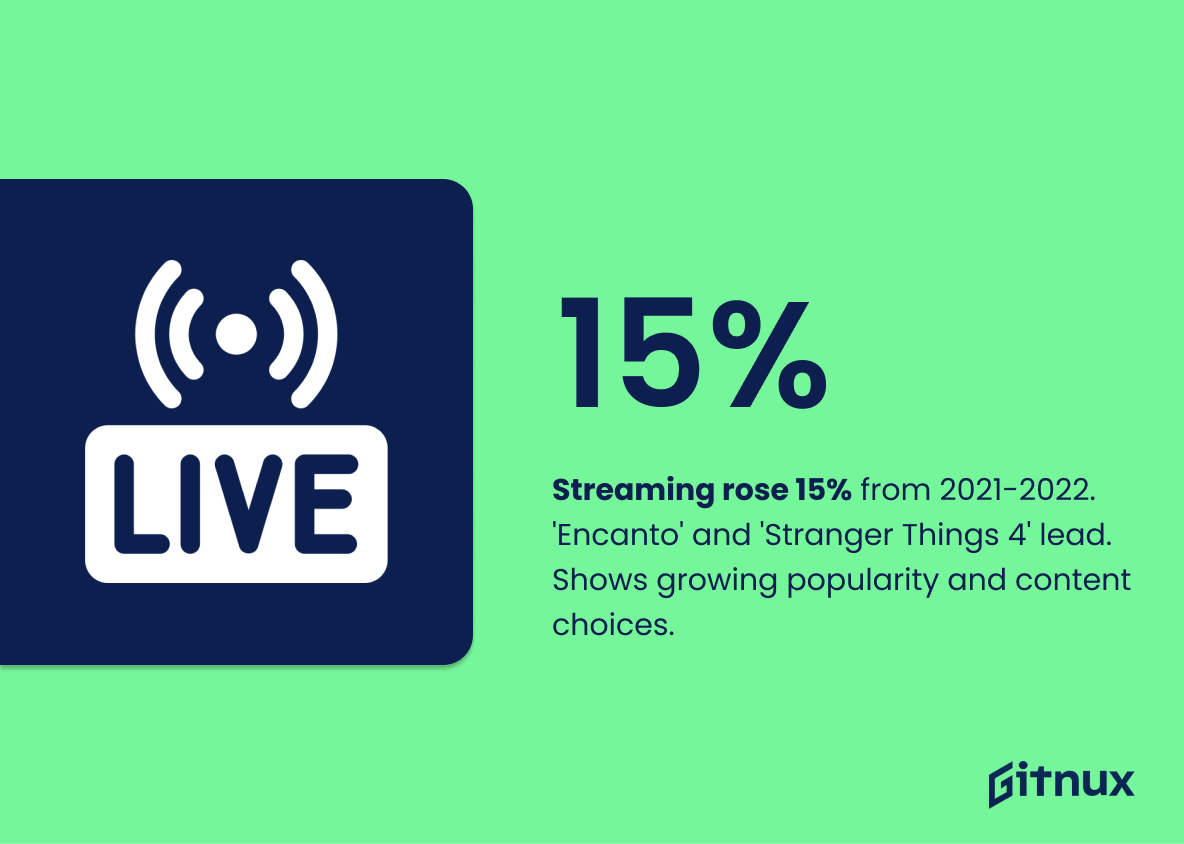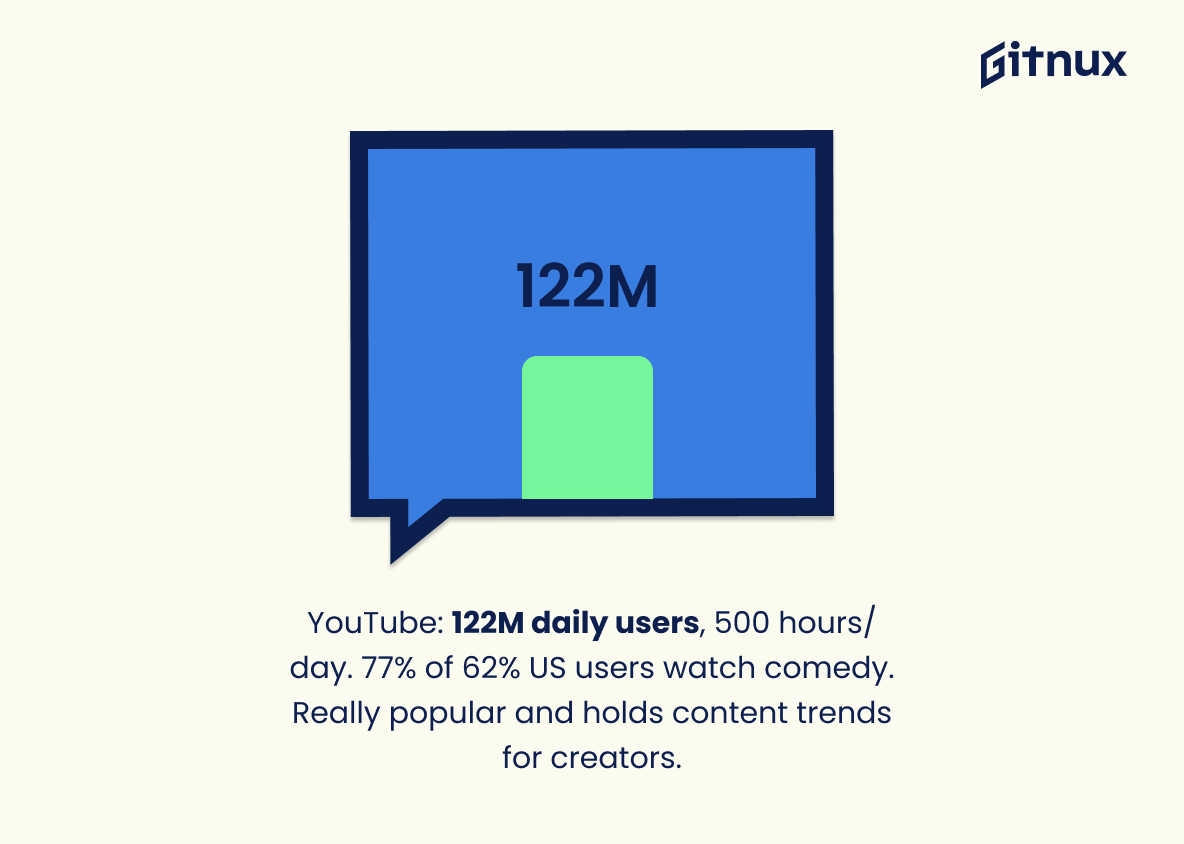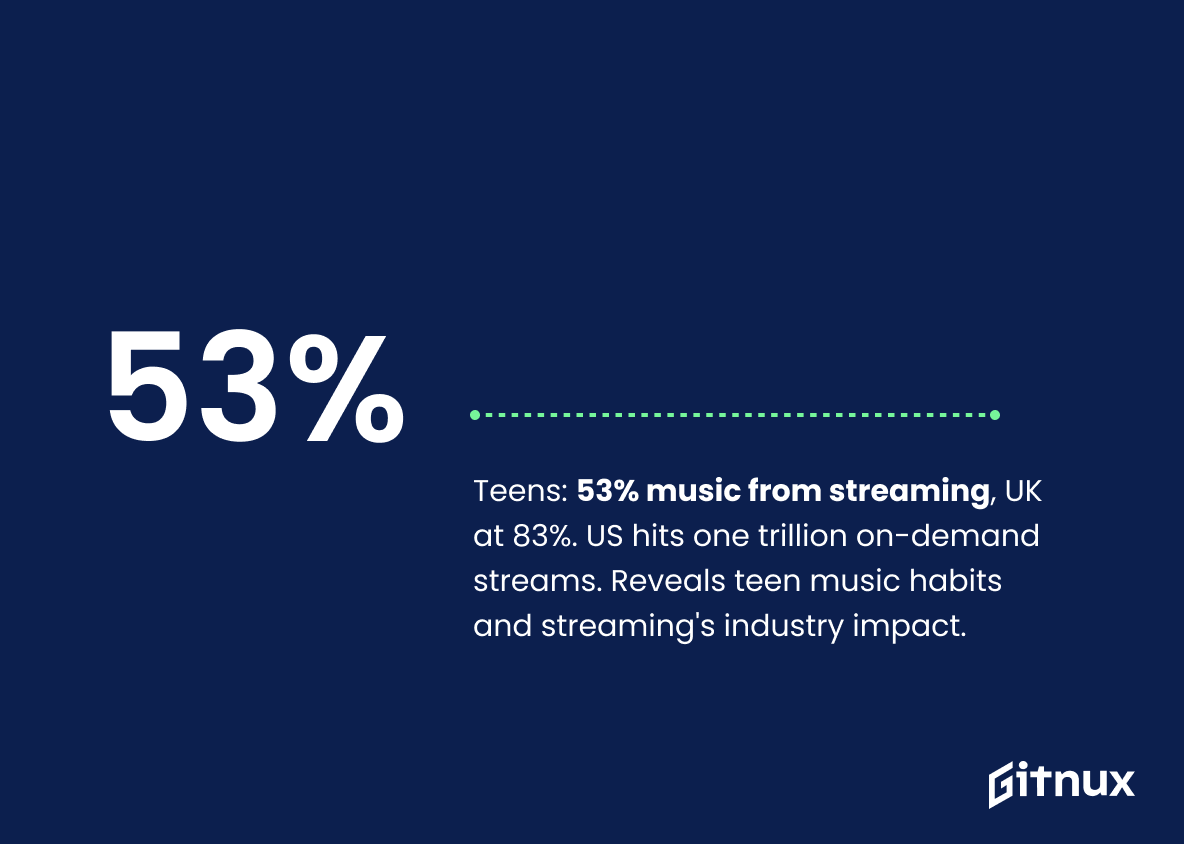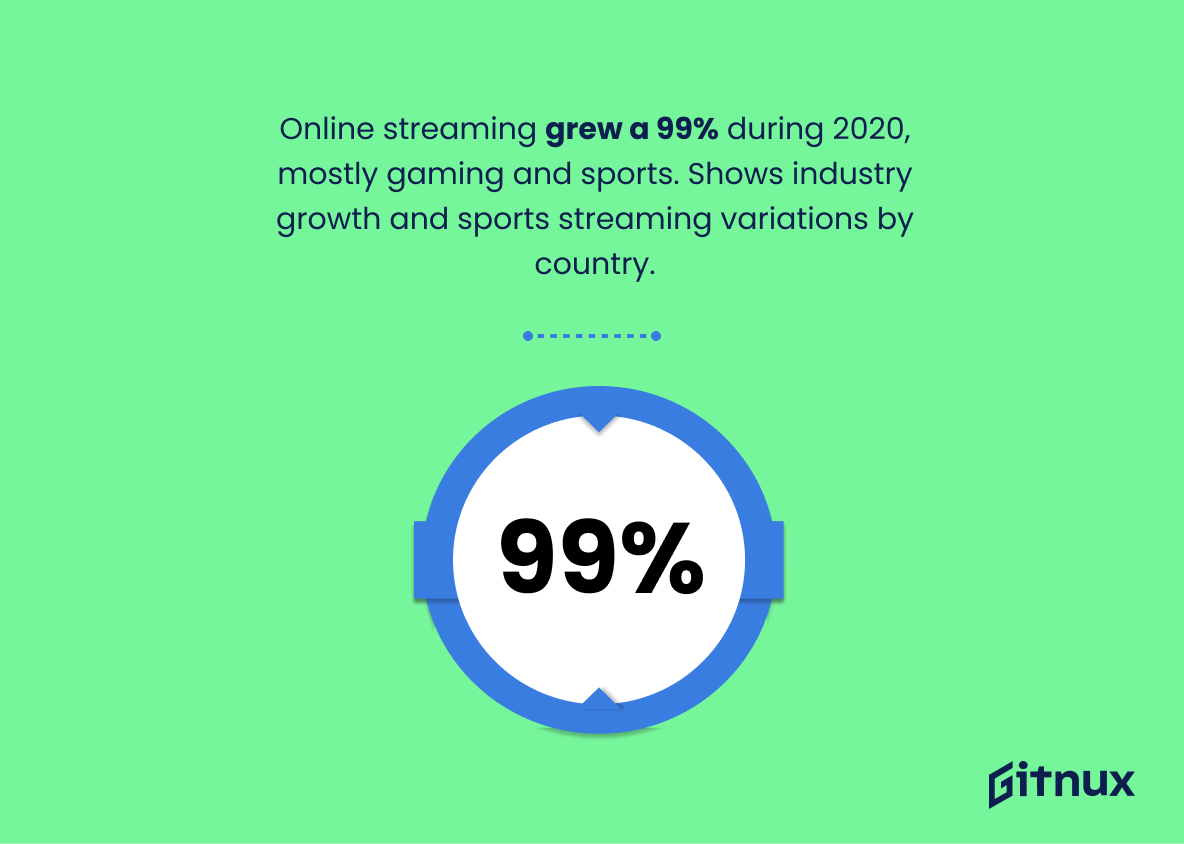Welcome to the world of streaming statistics. As streaming services continue to become more popular, it’s important to understand the numbers behind them. In this blog post, we’ll take a look at the various streaming statistics and how they can help you understand the streaming landscape.
We’ll look at the most popular streaming services, the most popular genres, and the most popular artists. We’ll also explore the impact streaming has had on the music industry and how it’s changing the way we consume music. So, let’s dive in and explore the world of streaming statistics.
Streaming: The Most Important Statistics
The number of music streaming subscribers worldwide has increased rapidly, with Spotify leading the way with over 30% of all streaming subscribers.
Overall, streaming usage increased by 7.7% in June 2022, with Netflix having the largest increase at 16.3%.
Streaming: Statistics Overview
Live streaming is a rapidly growing industry, with the market projected to reach $223.98 billion by 2028. Twitch is the leading platform, hosting 91% of streaming content, and 80% of viewers prefer to watch streams from brands rather than read their blogs. This statistic is important because it highlights the immense potential of the live-streaming industry and the significance of Twitch as a platform. It also highlights the preference of viewers for live-streaming content over blog content, which can inform marketing strategies for brands.
Live streaming was up 13% in the second quarter of 2021 compared to the same time the year before, with viewers watching nearly 9 billion hours of content. This statistic matters in the context of streaming statistics because it shows that live streaming is becoming an increasingly popular way to consume content, with viewers watching less traditional TV as a result.
The Video Streaming (SVoD) segment is projected to reach US$95.86bn in revenue in 2023 with an annual growth rate of 9.77% and 1,636.0m users by 2027. This statistic is important because it shows the potential growth of the Video Streaming (SVoD) segment, and the potential for new customers to be attracted to services like Apple TV+. It also highlights the potential limitations of the segment due to the lack of willingness to pay in large markets like China.
Women are slightly over-represented in online subscription and pay-TV viewing, while the 18-39 age group is over-represented in online subscription viewing and white audiences are slightly under-represented. This matters in the context of streaming statistics because it shows that streaming services are reaching a broad audience, which is important for the success of streaming services.
Twitch had 9 million monthly users in 2021, with 22.8 billion hours of content consumed and $2.6 billion in revenue, mostly from advertising. This is significantly higher than YouTube Gaming and Facebook Gaming, and the majority of viewers are under 35. It matters because it shows the success of Twitch as a streaming platform and its potential for further growth.
Twitch has seen 997 billion minutes watched this year so far with an average of 94,800 streamers live at any time, with League of Legends being the most-watched game and Just Chatting the most-watched category. This demonstrates the growing popularity of Twitch and streaming in general, as the platform has seen continual growth since its launch in 2011.
Music streaming revenue in the US has more than doubled in the past four years, with Spotify dominating the market. This is important because it shows the growth of streaming services, as well as the increasing popularity of podcasts and video streaming services. This indicates that streaming services are becoming more popular and profitable, which could lead to more investment in the industry.
Paid streaming subscriptions make up the majority of streaming revenue in the U.S. and R&B/hip-hop is the most popular streaming genre. This matters because it shows that streaming services are a major source of revenue for the U.S. music industry and that R&B/hip-hop is the most popular genre among subscribers. It also shows that there is a large number of people who are willing to pay for streaming services, which means that streaming services are a viable business model.
The number of music streaming subscribers worldwide has increased rapidly, with Spotify leading the way with over 30% of all streaming subscribers. This statistic is important because it shows the growth of the music streaming industry and the dominance of Spotify in the market. It also highlights the potential of other streaming platforms, such as Deezer, to gain a larger share of the market.
Music streaming subscriptions in the USA increased by 11% in 2021, with Spotify leading the market share at 31% and Apple Music at 15%. This matters because it shows the increasing popularity of streaming services and the potential for growth in the global market of music streaming, which is worth $29.5 billion.
Streaming increased by 15% from 2021 to 2022, with ‘Encanto’ being the most streamed movie and ‘Stranger Things 4’ being the most streamed series. This is significant because it shows that streaming is becoming increasingly popular and that viewers are gravitating towards certain content.
YouTube is one of the most popular streaming platforms with 122 million active users daily, 1 billion hours’ worth of content watched globally every day, 62% of users in the USA accessing it daily, and 500 hours worth of content uploaded daily. 77% of users watch comedy videos. This statistic matters in the context of streaming statistics because it shows the immense popularity of YouTube and how it is a major player in the streaming industry. It also highlights the types of content that are popular on the platform, which can be used to inform content creation strategies.
53% of teens’ weekly music share is from streaming, with the UK having the highest percentage of music streamers at 83%. This is important as it shows that streaming is the most popular way for teens to listen to music and that the UK is leading the way in terms of streaming. Additionally, the fact that on-demand music streams passed one trillion during a 12-month period for the first time ever in the US shows that streaming is becoming increasingly popular and is an important part of the music industry.
78% of people globally use audio streaming services, with a 51% increase in music listening time in 2021, particularly among 25-34-year-olds (61%) and least among 55-64-year-olds (28%). This statistic matters in the context of streaming statistics because it shows that audio streaming services are becoming increasingly popular, particularly among younger age groups, and that streaming services are a viable option for music listening.
The online streaming industry grew by 99% during the pandemic, with gaming and sports events being the most popular genres. In China, 54% of sports fans watch live streamed sports events, while in the US the percentage has nearly doubled from 2011-2017. This statistic is important because it shows the growth of the online streaming industry, particularly during the pandemic, and how it has become a popular form of entertainment. It also highlights the differences between countries in terms of the popularity of live streaming sports events.
Long-form content is becoming increasingly popular, with 38% of Americans regularly consuming content that is 10 minutes or longer and 6% growth since 2020. This is important for streaming statistics as it shows that people are increasingly preferring ad-supported content and that Twitch is the most popular live streaming platform.
Netflix experienced a dramatic slowdown in subscribers in 2021, resulting in an 11% drop in its share price. This matters in the context of Streaming Statistics because it highlights the competitive nature of the streaming industry, as other streaming services such as Disney+, HBO max and Paramount have continued to thrive despite Netflix’s slowdown.
Netflix holds the largest market share in Canada at 25%, followed by Disney+ and Prime Video at 20% each, Crave at 16%, Apple TV+ at 4% and Paramount at 3%. Disney+ has had the largest market share growth in 2021 and 2022, making it the only streaming service whose market share has grown consistently. This matters because it shows that Disney+ is gaining traction in the Canadian streaming market, despite Netflix’s large market share. This could indicate that Disney+ is becoming a more popular streaming platform in Canada, and could challenge Netflix’s market share in the future.
19% of total TV time is spent streaming content, and the cost is a major factor in subscription decisions, with 42% of people cancelling due to not using it enough to justify the cost. This matters in the context of streaming statistics because it shows that cost is a major factor in subscription decisions and that people are likely to cancel their subscriptions if they don’t use the service enough to justify the cost. This highlights the importance of providing value for customers in order to keep them subscribed.
Overall, streaming usage increased by 7.7% in June 2022, with Netflix having the largest increase at 16.3%. This matters because it shows that streaming is becoming increasingly popular and that Netflix is the most popular streaming platform.
Global streaming revenue increased by 19.9% in 2019.
More and more people are turning to streaming as their preferred method of consuming media. It is a clear indication that streaming is becoming an increasingly important part of the entertainment industry, and is likely to continue to grow in the coming years.
As of Q1 2021, Netflix had over 207.64 million subscribers worldwide.
The company has been able to attract a large number of subscribers, indicating that it is a popular choice for streaming content. This statistic is also important in understanding the current state of the streaming industry, as it provides insight into the number of people who are using streaming services.
In 2020, streaming services collectively grew by over 26%, reaching 1.1 billion subscribers worldwide.
This statistic is a testament to the immense growth of streaming services in 2020, highlighting the immense popularity of streaming services and their ability to reach a global audience. It is a clear indication of the impact streaming services have had on the entertainment industry, and it is an important statistic to consider when discussing streaming statistics.
49% of US streaming service users have canceled their subscriptions due to content dissatisfaction.
This statistic is a telling indication of the importance of content satisfaction for streaming service users. It highlights the need for streaming services to provide content that meets the expectations of their users, or risk losing them to competitors. This statistic is a valuable insight for anyone looking to understand the streaming landscape and the preferences of streaming service users.
TikTok was the most downloaded streaming video app in 2020, with over 830 million downloads.
With over 830 million downloads, it is clear that TikTok has become a major player in the streaming video industry, and its success is a reflection of the ever-growing demand for streaming services.
Video accounted for 60% of downstream traffic on the internet in 2019.
Streaming has become an integral part of our lives, and that it is now responsible for a significant portion of the internet’s downstream traffic. This is an important statistic to consider when discussing streaming statistics, as it provides insight into the current state of streaming and its importance in our lives.
80% of US households had a streaming subscription service in 2020.
Streaming has become an integral part of the lives of many Americans, and that streaming services are now a major part of the entertainment landscape. This statistic is essential for any blog post about streaming statistics, as it provides a clear picture of the current state of streaming in the US.
Adult users in the US spend an average of 1 hour and 44 minutes per day consuming streaming content.
This statistic is a telling indication of the impact streaming content has had on the US adult population. It demonstrates that streaming content has become an integral part of the daily lives of many Americans, with an average of 1 hour and 44 minutes being devoted to it each day. This statistic is a powerful reminder of the importance of streaming content in the lives of many people, and its relevance to the blog post about streaming statistics is clear.
The Twitch platform experienced 718.7 million hours streamed in Q1 2021.
This highlights the potential of streaming as a viable career path for content creators, and the potential for businesses to capitalize on the platform’s success. Furthermore, it shows that streaming is becoming increasingly popular among viewers, indicating that streaming is here to stay.
Disney+ reached 100 million subscribers just 16 months after its launch in 2019.
This speaks to the success of the streaming service and its ability to draw in subscribers with its vast library of content. This statistic is a clear indication that streaming services are here to stay and that Disney+ is a major player in the streaming industry.
In 2020, over 75% of online gamers played while also watching live streaming games.
Streaming games have become an integral part of the gaming experience, with a majority of gamers engaging in both activities. This statistic is important to consider when discussing streaming statistics, as it demonstrates the impact streaming games have had on the gaming industry.
The live streaming platform, Bigo Live, generated over $314 million in revenue in 2020.
This is a clear indication that streaming services are becoming increasingly popular and profitable, making it an important statistic to consider when discussing streaming statistics.
72% of US consumers subscribed to more than one streaming service in 2020.
Streaming services have become an integral part of the lives of many US consumers, with the majority of them opting to subscribe to more than one service. This statistic is an important piece of information for anyone looking to gain insight into the streaming industry and its impact on the US consumer market.
In Q3 of 2020, 720,000 people watched concurrent premieres of “The Boys” on Amazon Prime Video.
Streaming services are capable of drawing in huge audiences for their content, and that they are becoming increasingly popular as a way to watch television and movies. This statistic is a great example of how streaming services are changing the way people consume media, and it is an important piece of information for anyone interested in streaming statistics.
Audio streams in the US exceeded 1 trillion for the first time in 2020.
Streaming has become an increasingly popular way for people to consume music, and that the industry is continuing to expand. This is an important point to consider when discussing streaming statistics, as it shows the potential for further growth in the future.
Conclusion
In conclusion, streaming has become an integral part of the music industry, and it’s clear that it’s here to stay. With streaming services such as Spotify, Apple Music, and YouTube Music, artists are able to reach a wider audience and make more money from their music. The streaming statistics show that streaming is growing rapidly and is becoming increasingly popular. As streaming continues to grow, it’s important to keep up with the latest streaming statistics to stay ahead of the curve.
References
1 – https://findstack.com/resources/live-streaming-statistics/
2 – https://bloggingwizard.com/live-streaming-statistics/
3 – https://www.statista.com/outlook/dmo/digital-media/video-on-demand/video-streaming-svod/worldwide
4 – https://www.marketingcharts.com/industries/media-and-entertainment-225265
5 – https://www.businessofapps.com/data/twitch-statistics/
6 – https://www.streamscheme.com/twitch-statistics/
7 – https://www.statista.com/topics/1594/streaming/#topicOverview
8 – https://musicalpursuits.com/music-streaming/
9 – https://www.statista.com/topics/6408/music-streaming/#topicOverview
10 – https://sxmbusiness.com/music-streaming-market-share-and-revenue-statistics/
11 – https://variety.com/2023/digital/news/stranger-things-most-streamed-tv-show-2022-1235503095/
12 – https://www.globalmediainsight.com/blog/youtube-users-statistics/#:~:text=YouTube%20has%20over%20122%20million,content%20is%20uploaded%20into%20YouTube.
13 – https://static.billboard.com/files/pdfs/NIELSEN_2019_YEARENDreportUS.pdf
14 – https://www.ifpi.org/wp-content/uploads/2021/10/IFPI-Engaging-with-Music-report.pdf
15 – https://www.zippia.com/advice/live-streaming-statistics/
16 – https://channelfactory.com/6-streaming-industry-trends-for-2022-and-beyond/
17 – https://www.theguardian.com/media/2021/apr/20/netflix-records-dramatic-slowdown-in-subscribers-as-pandemic-boom-wears-off#:~:text=Netflix’s%20share%20price%20dropped%2011,triggered%20lockdowns%20across%20the%20world.
18 – https://cultmtl.com/2022/11/market-share-of-streaming-services-netflix-canada-prime-video-disney-plus-crave-apple-tv-paramount-house-of-the-dragon/
19 – https://www.nielsen.com/insights/2020/playback-time-which-consumer-attitudes-will-shape-the-streaming-wars/
20 – https://www.nielsen.com/insights/2022/streaming-claims-more-than-one-third-of-total-tv-time-in-june-and-hits-fourth-straight-monthly-viewing-record/
21 – https://www.leichtmanresearch.com
22 – https://www.prnewswire.com
23 – https://techcrunch.com
24 – https://www.streamtracker.gg
25 – https://www.emarketer.com
26 – https://www.globenewswire.com
27 – https://www.slashgear.com
28 – https://www.billboard.com
29 – https://www.ifpi.org
30 – https://www.limelight.com
31 – https://www.statista.com
32 – https://www.broadbandtvnews.com
33 – https://www.cnbc.com
34 – https://sensortower.com
35 – https://www.allconnect.com
